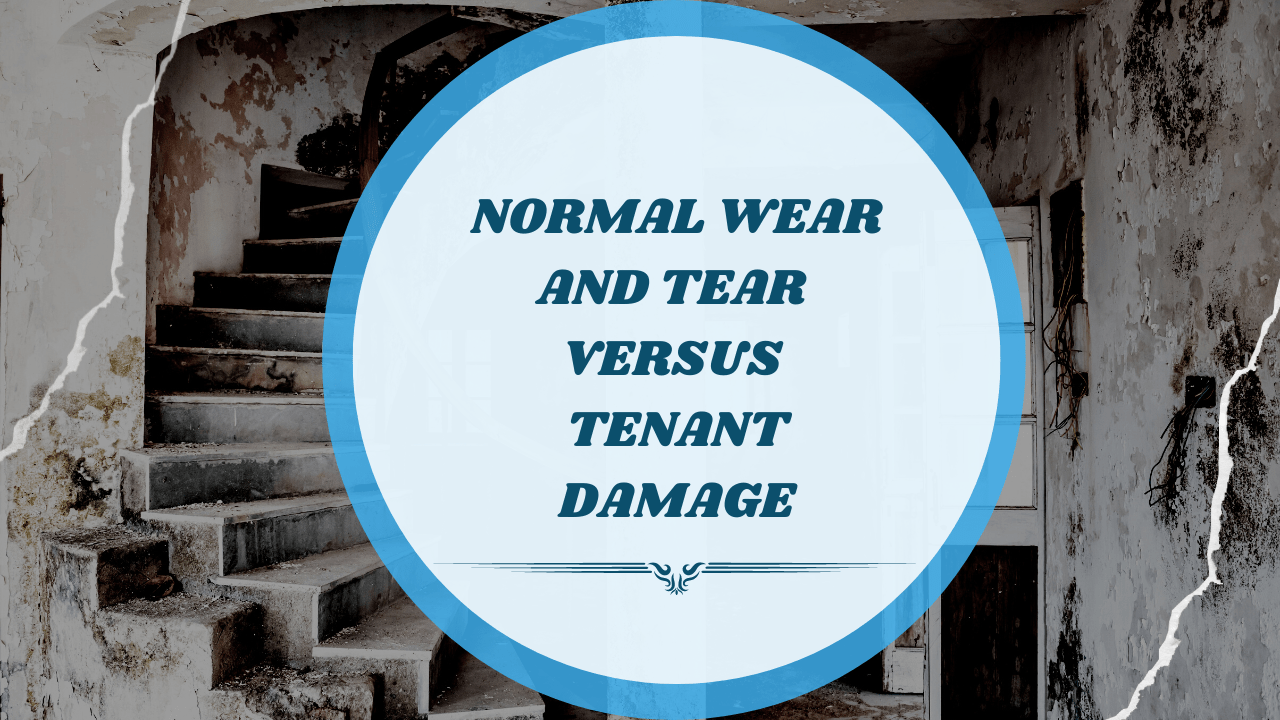You never know what you’re going to find when you walk into that property after a tenant has moved out.
Unless you’ve done an inspection already.

According to California rental laws, you can charge a tenant’s security deposit for property damage, but not for general wear and tear. Here’s the problem for a lot of rental property owners: The difference isn’t always clear.
Tenants, it seems, will insist that everything is wear and tear. They’ll insist that some broken item was already broken when they moved in. Landlords will want to believe that anything they need to repair or replace is due to tenant damage instead of general wear and tear.
How can all of this be navigated at the end of a lease term, when you’re preparing to calculate how much of the security deposit is going back to your tenant?
You need to know what you’re looking at when you conduct the move-out inspection. More importantly, you need to document the condition of the property before and after a tenancy. You’ll need a checklist, some photos, and maybe even video.
Here’s how you know whether you’re looking at normal wear and tear or damage at your Eureka rental property.
There isn’t a universally agreed upon definition of normal wear and tear as it pertains to rental properties. You’ll have to rely on understanding what the courts have generally held to be wear and tear and what they see as damage.
Here’s our best and most qualified shot at a definition: Normal wear and tear is the natural deterioration that happens to a property when a person lives in that property.
It’s the type of thing that will happen to any home, no matter who is living in it. You can look around the home you’re living in right now, and you’ll likely see signs of wear and tear. Property owners are responsible for it because it’s expected. It’s going to happen even with tenants who don’t leave a huge footprint.
For the purposes of rental property, wear and tear usually will include:
As the rental property owner, you will always be responsible for these costs. They are part of the expenses that you plan on when you buy an
investment home. They’re part of your turnover process.
Smart landlords will budget for wear and tear items as they prepare to turn over their properties. This is one reason why tenant retention is so crucial - you don’t want to be improving your property every year.
You cannot charge the tenant’s security deposit for these things. If you do, you’ll face some unpleasant and expensive legal consequences. Unlawful security deposit deductions can result in heavy penalties. Don’t risk it.
Keep in mind that the longer a tenant lives in your unit, the more wear and tear you will encounter after they move out. A one-year tenancy will have less wear and tear than a 5-year tenancy.
There are some key differences between normal wear and tear and property damage. When your rental property is damaged, it’s the responsibility of your tenants, and you can deduct the repair costs from the security deposit you’ve collected.
You don’t expect your property to be damaged. That’s why it’s not treated the same as normal wear and tear. The damage caused by tenants can potentially harm the value, usefulness, or normal functioning of your rental property and its systems.
In most cases, tenants are not purposely causing damage to your property. But, even accidental damage needs to be paid for, and your residents should be held accountable. This should be explicitly stated in your lease agreement.
Here are some examples of property damage:
Security deposit law in California requires that you provide an itemized list of the deductions you’re making to that deposit. If you decide to withhold funds from the security deposit to pay for damage, make sure you’re able to submit invoices, receipts, and other documentation to support what you’re subtracting.

You never know what you’re going to find when you walk into that property after a tenant has moved out.
Unless you’ve done an inspection already.
In California, you’re required to offer your tenants a pre-move out inspection two weeks before they vacate the home.
Not all tenants accept this offer, but you shouldn’t feel put out or burdened if they do request the pre-move out inspection. It’s actually going to help you. You get the opportunity to discuss potential security deposit deductions with your tenants, and you also get an idea of how much work the turnover process will require.
Work with your tenants to schedule an
inspection time that’s respectful of their schedule. You’ll want to provide at least 48 hours of notice. Walk through the property with your tenants and make a note of the potential damage that’s found. You’ll also get an idea of what sort of wear and tear items will require your attention.
If you need some help with understanding wear and tear versus damage, an
expert Eureka property manager can help. We work with owners to settle these questions all the time. Please contact us at Rentor if you’d like some additional guidance and advice that’s based upon your own unique property. We proudly stand behind our reputation as a locally preferred
property management company in Eureka and surrounding areas in Humboldt County.
© All Rights Reserved.
Rentor
Privacy Policy: No mobile information will be shared with third parties/affiliates for marketing/promotional purposes. All other categories exclude text messaging originator opt-in data and consent; this information will not be shared with any third parties